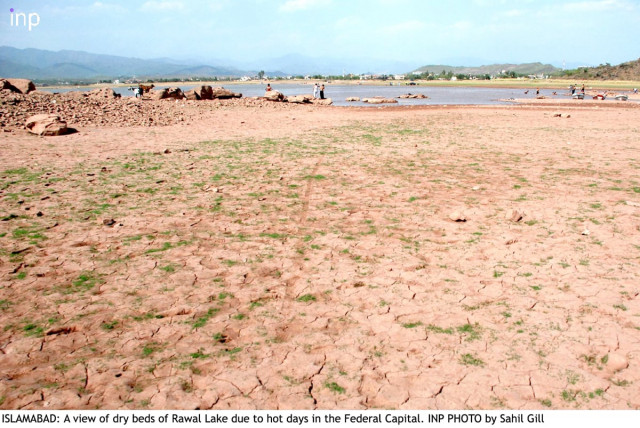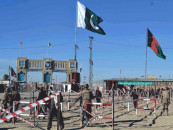Stalled: Water treatment project starved of funds
Rawal Lake is the primary source of water for Rawalpindi residents.

The project’s estimated cost is around Rs2.25 billion, according to the ICT. PHOTO: INP
Those who drink the lake’s water must also pay to maintain its quality. This argument may cause another delay in an already-delayed project to further improve the quality of drinking water supplied from Rawal Lake.
Water from the lake is supplied to Rawalpindi residents after purification at a treatment plant operated by the Rawalpindi Water and Sanitation Agency (WASA).
The Islamabad Capital Territory (ICT) Administration had envisioned a mega project to install four sewage treatment plants on lake inlets at Bari Imam, Simly Dam Road, and lower and upper Shahdara to clean water in the lake’s catchment areas before it entered the lake.
After months of efforts at federal level to finance the project, a recent meeting held by the Physical Planning and Housing Section of the Planning and Development Division concluded that the Rawalpindi administration should be taken on board to share the cost.
“After much discussion, it was decided since Rawalpindi residents are the main beneficiaries of the project, the Punjab government should also fund it,” ICT Agriculture Director Muhammad Asfar said.
The project’s estimated cost is around Rs2.25 billion, according to the ICT.
The project, commissioned in 2012, does not have any allocation in the development budget for 2013-14, nor does it show on the proposed list of Public Sector Development Programme 2014-15 projects.
The date, however, for the meeting between the ICT and RDA to discuss sharing of cost has not been fixed yet, making it even more unlikely that the project would materialise any time soon.
WASA officials were unavailable for comment about the cost-sharing proposal.
The project proposal was part of long-term administrative efforts to improve water quality after a 2012 Supreme Court ruling directed the Punjab and federal environment protection agencies to monitor contamination in the lake. In February 2013, the court accepted a Cabinet Division report that stated the water was fit for human consumption.
Despite the report’s claims, the fitness of the water is greatly affected by the four major and 43 small tributaries that feed the lake via the Korang River.
In a research paper published in the International Environmental Monitoring Assessment Journal in December 2013, Asma Saeed and Dr Imran Hashmi of the National University of Sciences and Technology (NUST) studied the water quality in the Lake.
They found that the physio-chemical parameters were higher at the tributaries but diluted in the lake.
Pollution in the lake can thus be attributed to human activities in the lake’s surroundings, said Hashmi. He said the turbidity and especially total dissolved solids in water from the tributaries can increase the cost of the water treatment.
“You will need more chlorination to clean the water, which will make water treatment more expensive, and we usually don’t have enough funds,” Hashmi said.
Short-term measures such as constructing soaking pits closing illegal sewerage connections and penalising poultry farms discharging waste in to the lake have helped but the long-term solution stalled due to lack of funding. “If the drinking water is clean, the health costs will significantly decrease,” Hashmi said.
Published in The Express Tribune, May 6th, 2014.



















COMMENTS
Comments are moderated and generally will be posted if they are on-topic and not abusive.
For more information, please see our Comments FAQ